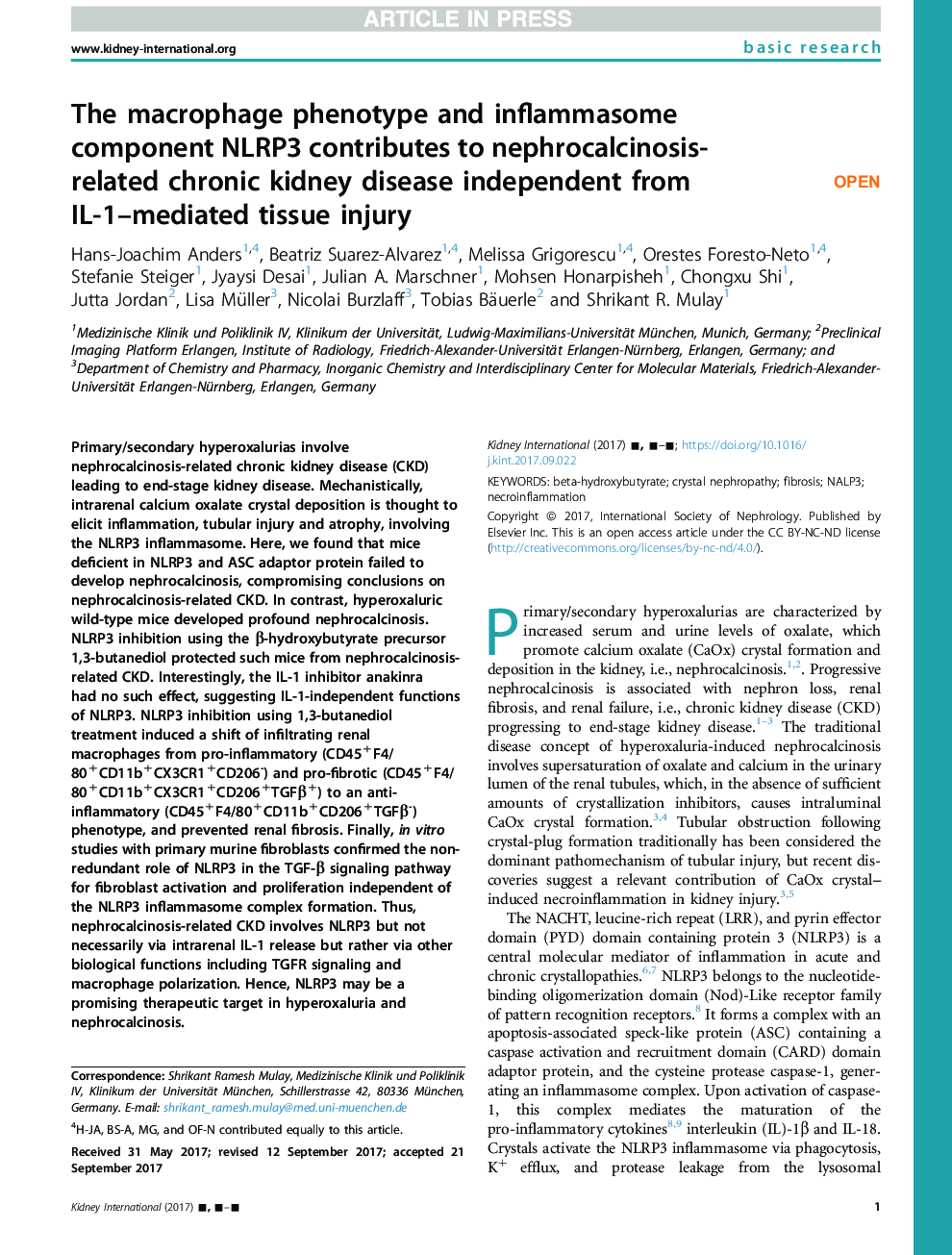| Article ID | Journal | Published Year | Pages | File Type |
|---|---|---|---|---|
| 8772867 | Kidney International | 2018 | 14 Pages |
Abstract
Primary/secondary hyperoxalurias involve nephrocalcinosis-related chronic kidney disease (CKD) leading to end-stage kidney disease. Mechanistically, intrarenal calcium oxalate crystal deposition is thought to elicit inflammation, tubular injury and atrophy, involving the NLRP3 inflammasome. Here, we found that mice deficient in NLRP3 and ASC adaptor protein failed to develop nephrocalcinosis, compromising conclusions on nephrocalcinosis-related CKD. In contrast, hyperoxaluric wild-type mice developed profound nephrocalcinosis. NLRP3 inhibition using the β-hydroxybutyrate precursor 1,3-butanediol protected such mice from nephrocalcinosis-related CKD. Interestingly, the IL-1 inhibitor anakinra had no such effect, suggesting IL-1-independent functions of NLRP3. NLRP3 inhibition using 1,3-butanediol treatment induced a shift of infiltrating renal macrophages from pro-inflammatory (CD45+F4/80+CD11b+CX3CR1+CD206-) and pro-fibrotic (CD45+F4/80+CD11b+CX3CR1+CD206+TGFβ+) to an anti-inflammatory (CD45+F4/80+CD11b+CD206+TGFβ-) phenotype, and prevented renal fibrosis. Finally, in vitro studies with primary murine fibroblasts confirmed the non-redundant role of NLRP3 in the TGF-β signaling pathway for fibroblast activation and proliferation independent of the NLRP3 inflammasome complex formation. Thus, nephrocalcinosis-related CKD involves NLRP3 but not necessarily via intrarenal IL-1 release but rather via other biological functions including TGFR signaling and macrophage polarization. Hence, NLRP3 may be a promising therapeutic target in hyperoxaluria and nephrocalcinosis.
Related Topics
Health Sciences
Medicine and Dentistry
Nephrology
Authors
Hans-Joachim Anders, Beatriz Suarez-Alvarez, Melissa Grigorescu, Orestes Foresto-Neto, Stefanie Steiger, Jyaysi Desai, Julian A. Marschner, Mohsen Honarpisheh, Chongxu Shi, Jutta Jordan, Lisa Müller, Nicolai Burzlaff, Tobias Bäuerle, Shrikant R. Mulay,
